In this month''s lesson we will beef up a Travis picking rhythm guitar part with bass fills.
| Print it! Click here to download a high-resolution, printable PDF of the notation. |
| Chops: Intermediate Theory: Beginner Lesson Overview: • Learn the basics of Travis picking. • Move basic patterns through the I, IV, and V chords. • Create interesting bass fills that lead into the next chord. |
The Travis picking part is pretty basic. Taking its moniker from one of the great country pickers of all time, Merle Travis, this is a style of playing that consists of an alternating bass line played with the thumb or flat pick and melody notes played with the fingers. Scotty Moore was Elvis' guitarist on the Sun Record's recordings and relied heavily on Travis picking for his rhythm guitar work. If you're having trouble refer back to my lesson called Rockabilly Rhythm Basics.
First, let’s take a look at the bass fills. When an upright player slaps you get two attacks: the note followed by the slapping of the string. On guitar we could imitate this by either double picking each note or by using a single repeat delay or "slap back.” If you're having trouble with double picking this fast, feel free to play each note just once. It won't be the same effect but it will still sound good.
In Fig. 1 we are applying the Travis picking pattern over an E6 chord. The bass line alternates between the 6th and 4th strings while the melody is played on the top two strings. Some melody notes are on the downbeat and some are on the upbeat. Go slow and make sure you have the right sequence. When the pattern is complete we start our bass fill. We'll be double picking down an E Mixolydian scale from B back to the root.
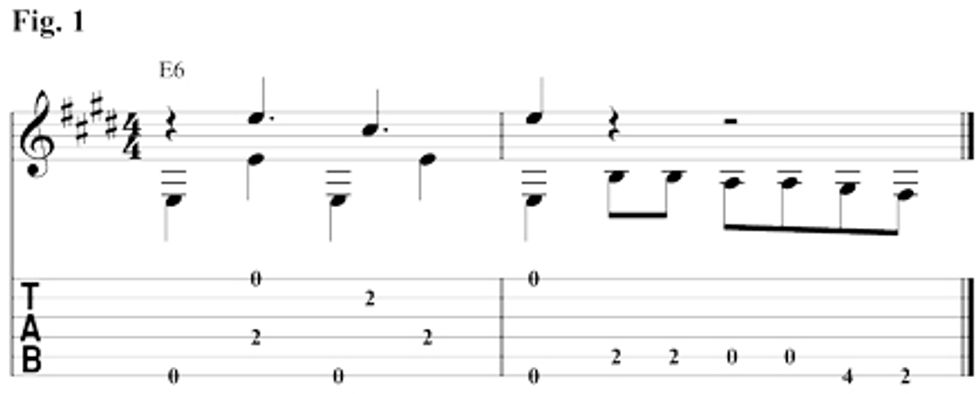
We use the same pattern in Fig. 2 except this time our bass fill is designed to pull us into the A7 chord. The fill here starts on E.
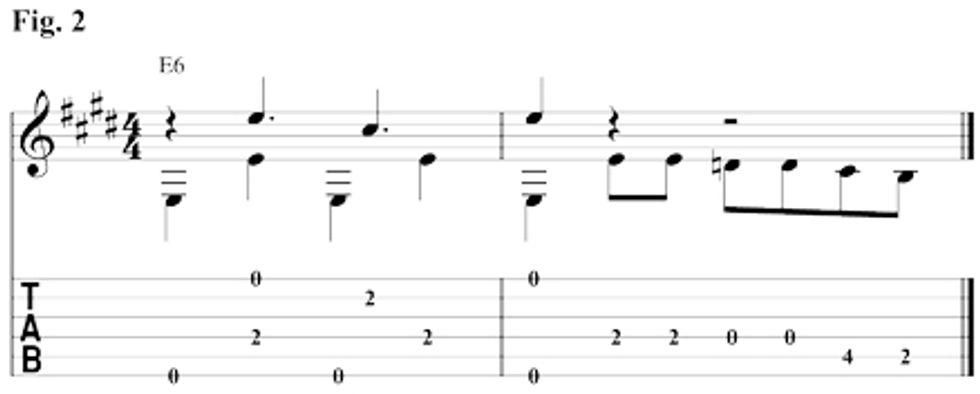
For Fig. 3 we move to the A7 chord and use the same rhythm along with a double stop on the top two strings. My alternating bass line goes between the open 5th string and E on the 4th string. I play the double stop by grabbing the top two strings with the middle and ring finger.
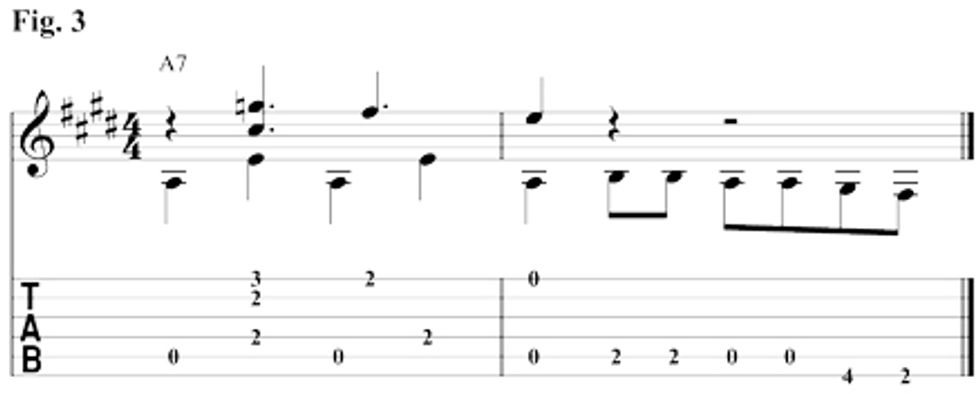
We use a chromatic fill to lead into the B7 chord from E6 in Fig. 4.
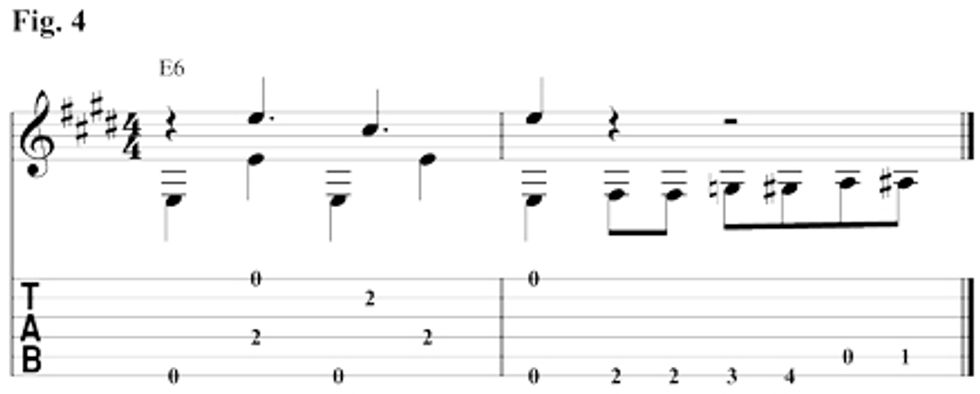
For the B7 chord in Fig. 5 I'm using my pinky to help with the descending melody. The bass line alternates between the 5th and 4th strings. The fill walks us back to the E6 chord.
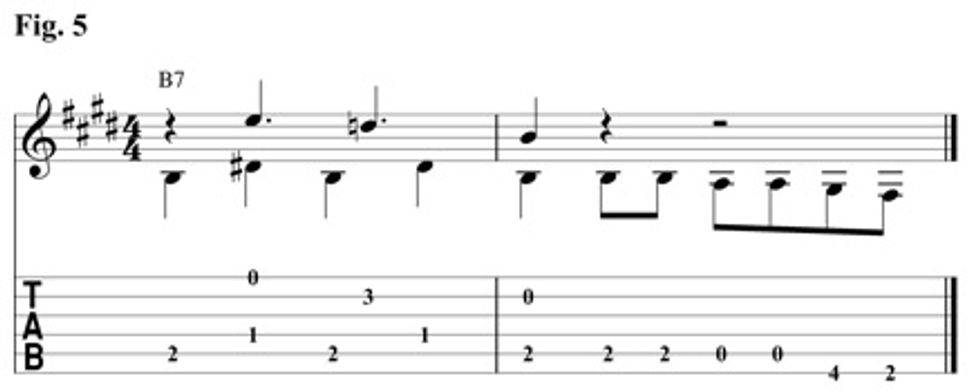
Everything comes together in Fig. 6. I'm using some slap back echo but I'm not using any reverb, just the sound of the room. The reverb can really wash out your slap back and make it sound like The Ventures covering rockabilly.
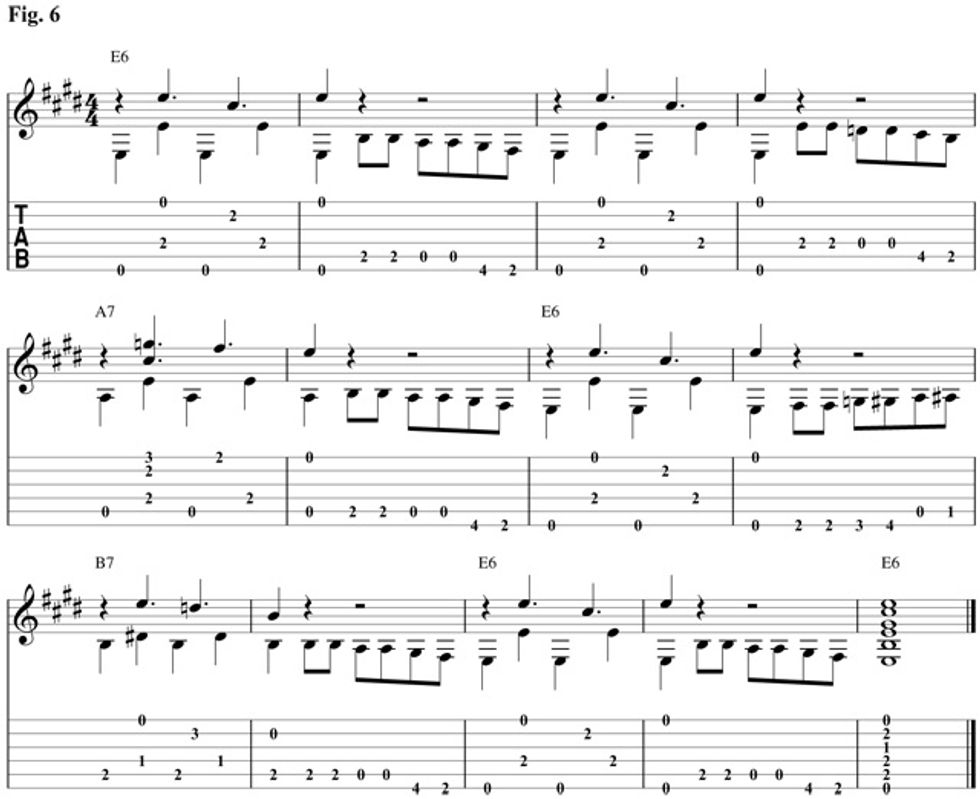
Try incorporating bass fills with tunes you already know. If you're playing with a bassist you'll need to make sure your fills are working together or it could be a mess. Good luck!
 Jason Loughlin has performed with Amos Lee, Rachael Yamagata, James Burton, Mike Viola, Nellie Mckay, Phil Roy, Marshall Crenshaw, Sara Bareillies, Lesley Gore, Ben Arnold and John Francis to name a few. Jason lives in Williamsburg, Brooklyn performing and teaching. Look out for his new record, Peach Crate, due out in February. For other info be sure to check his website jasonloughlin.com
Jason Loughlin has performed with Amos Lee, Rachael Yamagata, James Burton, Mike Viola, Nellie Mckay, Phil Roy, Marshall Crenshaw, Sara Bareillies, Lesley Gore, Ben Arnold and John Francis to name a few. Jason lives in Williamsburg, Brooklyn performing and teaching. Look out for his new record, Peach Crate, due out in February. For other info be sure to check his website jasonloughlin.com
